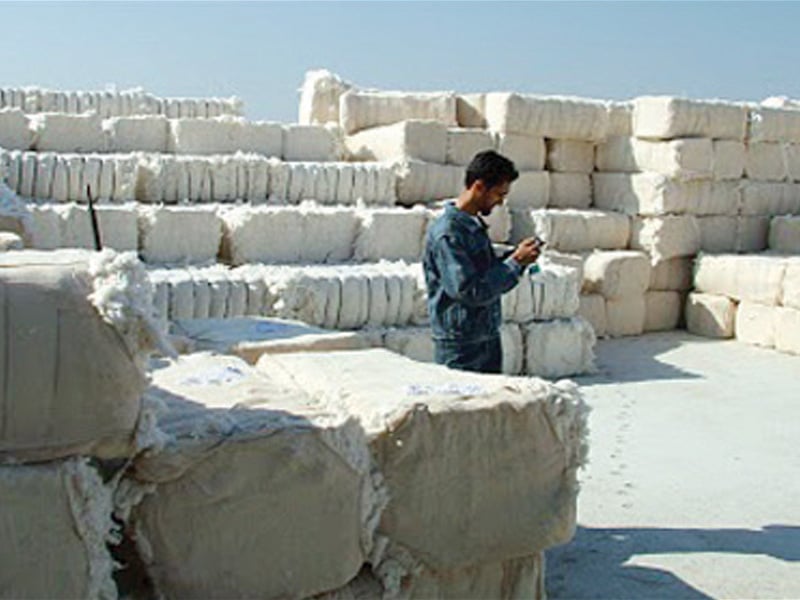
With incentives of crop insurance and quality premium for farmers, the government is planning to enhance cotton production to 22 million bales and exports to 3 million bales in a proposed five-year cotton policy, beginning 2013.
At present, average cotton production stands at 13 million bales and exports at 1 million bales.
“Cotton exports will go up to 3 million bales by 2017 on the back of better regulation of the market and encouraging incentives, which will be unveiled in the new cotton policy,” a senior government official told The Express Tribune while outlining salient features of the five-year policy.
In terms of consumption, demand for cotton is projected to rise to 19 million bales by 2017 compared to existing 14 million bales.
To enhance production, the area sown with cotton crop would be increased to 4.2 million hectares, up 1 million hectares from the current around 3.2 million hectares, he said. The country will also strive to achieve a better yarn recovery rate of 90% compared to the existing 85%.

According to the official, though Pakistan is the fourth largest producer of cotton after China, United States and India, it ranks 2nd in terms of contamination in cotton.
“Pakistan’s cotton fetches a low price because of contamination and the new policy will specifically address this issue,” the official stressed and pointed out that farmers producing clean cotton would be offered a premium as an encouragement. A cotton investment fund has been proposed for such schemes and programmes.
In the past too, the government offered a premium of Rs50 per maund, which bore fruit as cotton quality improved substantially and Pakistan stood way below at 25th position.
Under the five-year programme, he said, the government would be pressed to set aside funds for research and development, capacity-building and infrastructure development.
An insurance scheme is also under consideration to shield investments of farmers. “The scheme will cover crops of those farmers who get loans from banks, but it is unclear what will happen to the growers who do not receive any credit,” he said.
In order to streamline things, the State Bank of Pakistan (SBP) has been contacted in this connection.
In an attempt to minimise the role of middlemen and ensure direct contact between farmers and buyers, the government, in the first phase, will set up a model cotton trading house, which will work as a hub for sale of cotton.
A cotton ginning research and training institute will also be established. “This institute will set up a ginning factory for the farmers, where they will be able to process their produce. All countries, except India, have this system in place,” the official said.
Talking to The Express Tribune, Cotton Commissioner Dr Khalid Abdullah revealed that the draft of cotton policy had not yet been finalised.
Before that, he said, the federal government would take all provinces and other stakeholders on board. Seminars will also be organised on the proposed policy to create awareness and seek suggestions.
In the end, the cotton policy would be tabled before the Council of Common Interests (CCI) for its approval, he added.
Published in The Express Tribune, January 24th, 2013.
Like Business on Facebook to stay informed and join in the conversation.
COMMENTS (2)
Comments are moderated and generally will be posted if they are on-topic and not abusive.
For more information, please see our Comments FAQ





































1713853507-0/MalalaHilary-(2)1713853507-0-270x192.webp)







wot a joke !
the government is planning to enhance cotton production to 22 million bales and exports to 3 million bales in a proposed five-year cotton policy, beginning 2013.
be realistic guyz .... its not as easy as its seems on farmville